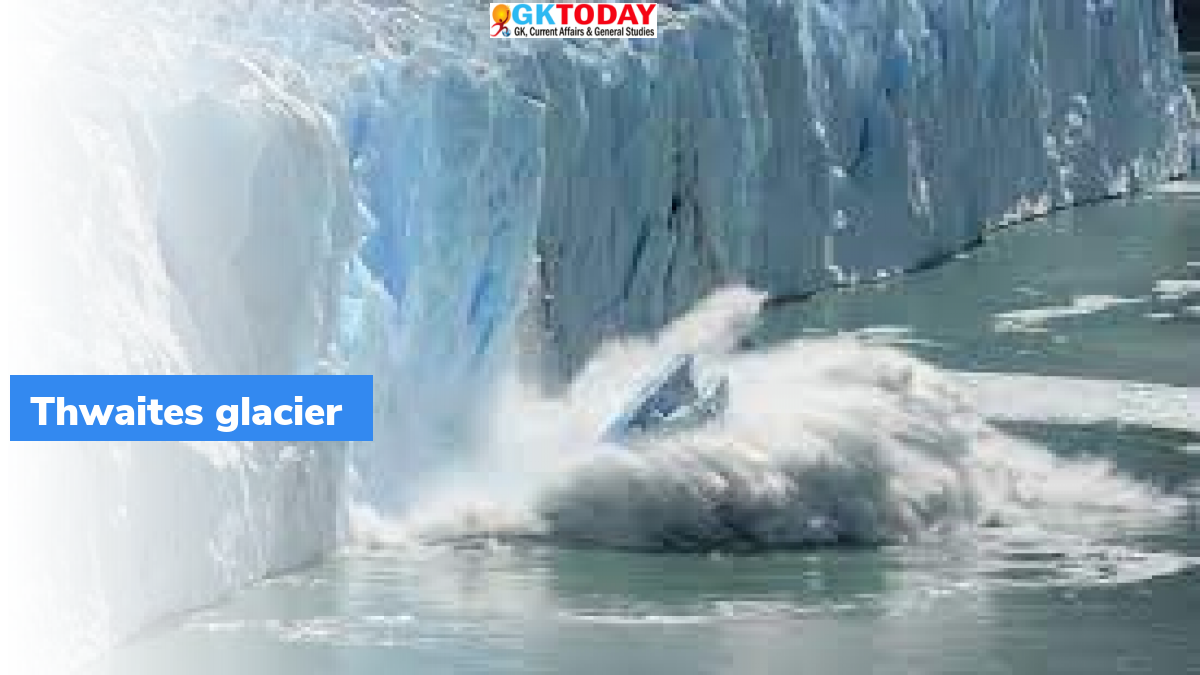Thwaites glacier
Thwaites Glacier is also called the Doomsday glacier. It is a vast Antarctic glacier that flows into the Pine Island Bay. It is a part of Amundsen Sea. The glacier is heading for dramatic change.
What are the concerns around Thwaites Glacier?
- The outflow speed of the glacier has doubled in 30 years. The International Thwaites Glacier Collaboration in December 2021 established the reason for the increasing outflow. It is because the warm ocean water is getting under the glacier and is increasing it melting rates.
- The warm water entering the bottom of the glacier is making it to run fast. Also, it is pushing back the zone where the glacier body becomes buoyant. The scientists are still not able to find out where this water is coming from.
Significance of Thwaites glacier
- It is the most important glacier in the world. And, also the riskiest glacier. It is massive. It accounts 4% of the world sea level every year.
- The additional threat posed by the glacier is its location. The glacier sits in the centre of the West Antarctic ice sheet. The ice sheet has more than three meters of additional potential sea level rise.
Why is Thwaites glacier important?
- The glacier is located in the stormiest part of the continent. It is remote, more than 1,600 km from research stations. So far only four humans have visited the glacier.
- Antarctic ice holds 90% of world fresh water, 80% of Antarctic ice is in the eastern part. The ice in eastern Antarctica is more than a mile thick. It rests on high ground. It creeps sluggishly to the sea. But the west Antarctic ice is different. It is smaller but is huge. It is more vulnerable to climate change. It does not rest on high ground. Therefore, the study on Thwaites Glacier is important.


